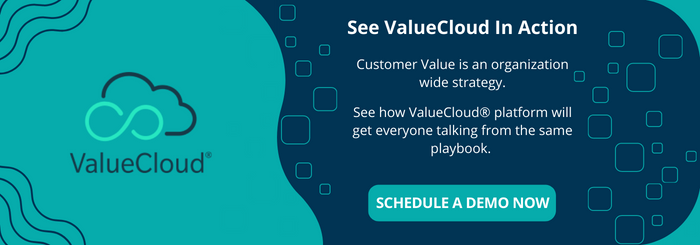Value Selling: Matching the Language of Your Buyer

Co-authored by Gabriel Vidal, Vice President of Customer Value and Sterling Cottam, Senior Director of Product & Platform Value, DecisionLink
Value Selling seeks to help the B2B buyer make an informed decision by quantifying the financial benefit of a solution and delivering a business case with an expected ROI. This method of selling is gaining popularity since it eases the buying decision while propelling the seller into the role of trusted advisor. But some benefits are non-financial, and the Value Seller should be equipped to discuss those as well.
Every buyer has a critical business issue they are looking to solve and a language they use to describe it. It is important for the Value Seller to position their solution appropriately and quantify what is important. For example, moving away from a paper-based solution into a digital solution provides clear cost and productivity benefits which can be expressed in financial terms. However, there are non-financial benefits as well such as: number of trees saved and lower carbon emissions. For a business case to be complete, it needs to express the value of all benefits.
We recently helped a Value Seller of a bank modernization solution create a hybrid business case. In this case, Productivity Improvements provided by an automatic teller machine could be financially quantified in terms of cost savings and non-financially quantified in terms of new headcount reduction. The Value Seller was aware of the language expected by the different buyers and her business case was able to switch back and forth as necessary.
Value Selling and the platforms that support it need to be flexible because the buyer decides the language of the conversation and the Value Seller needs to adapt. One executive buyer might want to save $1M in costs per year by moving to paperless, but another one could place higher importance in saving 100k trees instead. And they are both correct. The platform each Value Seller uses needs to be flexible enough to support both perspectives.

 ValueCloud
ValueCloud
.png?width=118&height=76&name=Rectangle%20(3).png) ValueCloud Ignite
ValueCloud Ignite
.png?width=92&height=92&name=Rectangle%20(4).png) Free Assessment
Free Assessment
.png?width=100&height=100&name=Rectangle%20(5).png) Watch a Demo
Watch a Demo
.png?width=82&height=96&name=Rectangle%20(6).png) Value Calculator
Value Calculator

.png?width=62&height=51&name=Group%2010%20(1).png) Marketing
Marketing
 Sales
Sales
 Customer Success
Customer Success
 Engage Prospects
Engage Prospects
 Win Deals Faster
Win Deals Faster
 Retain Customers
Retain Customers
.png?width=62&height=62&name=Rectangle%20(8).png) Adopt and Scale
Adopt and Scale
.png?width=54&height=54&name=Rectangle%20(9).png) Cybersecurity
Cybersecurity
 Healthcare
Healthcare
.png?width=54&height=54&name=Rectangle%20(10).png) IT & Software
IT & Software




